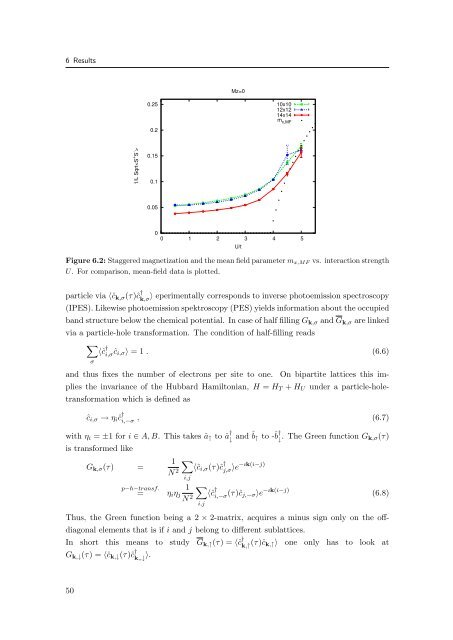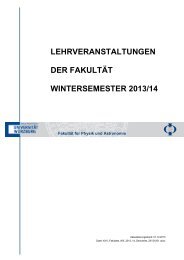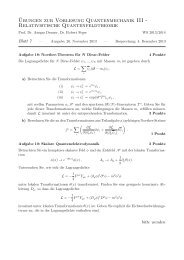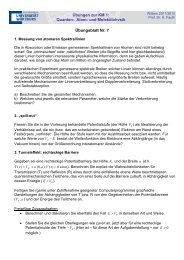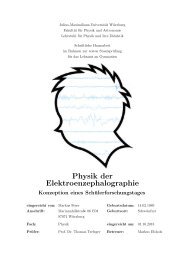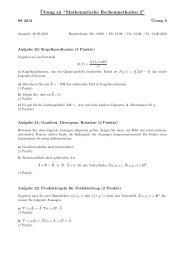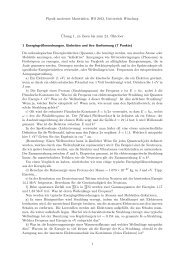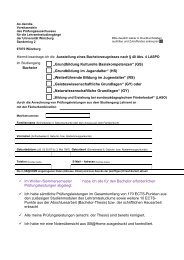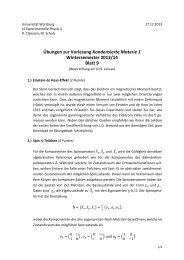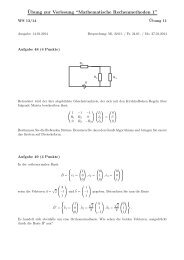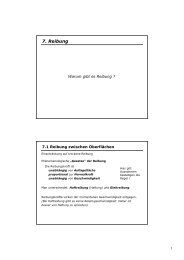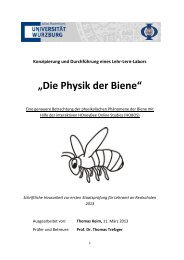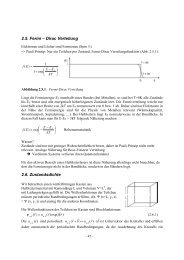Magnetic Field Induced Semimetal-to-Canted-Antiferromagnet ...
Magnetic Field Induced Semimetal-to-Canted-Antiferromagnet ...
Magnetic Field Induced Semimetal-to-Canted-Antiferromagnet ...
You also want an ePaper? Increase the reach of your titles
YUMPU automatically turns print PDFs into web optimized ePapers that Google loves.
6 Results<br />
1/L Sqrt<br />
0.25<br />
0.2<br />
0.15<br />
0.1<br />
0.05<br />
Mz=0<br />
0<br />
0 1 2 3 4 5<br />
U/t<br />
10x10<br />
12x12<br />
14x14<br />
m x,MF<br />
Figure 6.2: Staggered magnetization and the mean field parameter mx,MF vs. interaction strength<br />
U. For comparison, mean-field data is plotted.<br />
particle via 〈ĉk,σ(τ)ĉ †<br />
k,σ 〉 eperimentally corresponds <strong>to</strong> inverse pho<strong>to</strong>emission spectroscopy<br />
(IPES). Likewise pho<strong>to</strong>emission spektroscopy (PES) yields information about the occupied<br />
band structure below the chemical potential. In case of half filling Gk,σ and Gk,σ are linked<br />
via a particle-hole transformation. The condition of half-filling reads<br />
�<br />
σ<br />
〈ĉ †<br />
i,σ ĉi,σ〉 = 1 . (6.6)<br />
and thus fixes the number of electrons per site <strong>to</strong> one. On bipartite lattices this im-<br />
plies the invariance of the Hubbard Hamil<strong>to</strong>nian, H = HT + HU under a particle-hole-<br />
transformation which is defined as<br />
ĉi,σ → ηiĉ †<br />
i,−σ , (6.7)<br />
with ηi = ±1 for i ∈ A, B. This takes â↑ <strong>to</strong> â †<br />
is transformed like<br />
Gk,σ(τ) =<br />
p−h−transf.<br />
1<br />
N 2<br />
�<br />
i,j<br />
1<br />
= ηiηj<br />
N 2<br />
�<br />
↓ and ˆb↑ <strong>to</strong> -ˆb †<br />
↓<br />
〈ĉi,σ(τ)ĉ †<br />
j,σ 〉e−ık(i−j)<br />
i,j<br />
〈ĉ †<br />
−ık(i−j)<br />
i,−σ<br />
(τ)ĉj,−σ〉e<br />
. The Green function Gk,σ(τ)<br />
(6.8)<br />
Thus, the Green function being a 2 × 2-matrix, acquires a minus sign only on the off-<br />
diagonal elements that is if i and j belong <strong>to</strong> different sublattices.<br />
In short this means <strong>to</strong> study Gk,↑(τ) = 〈ĉ †<br />
k,↑ (τ)ĉk,↑〉 one only has <strong>to</strong> look at<br />
Gk,↓(τ) = 〈ĉk,↓(τ)ĉ †<br />
k,,↓ 〉.<br />
50


